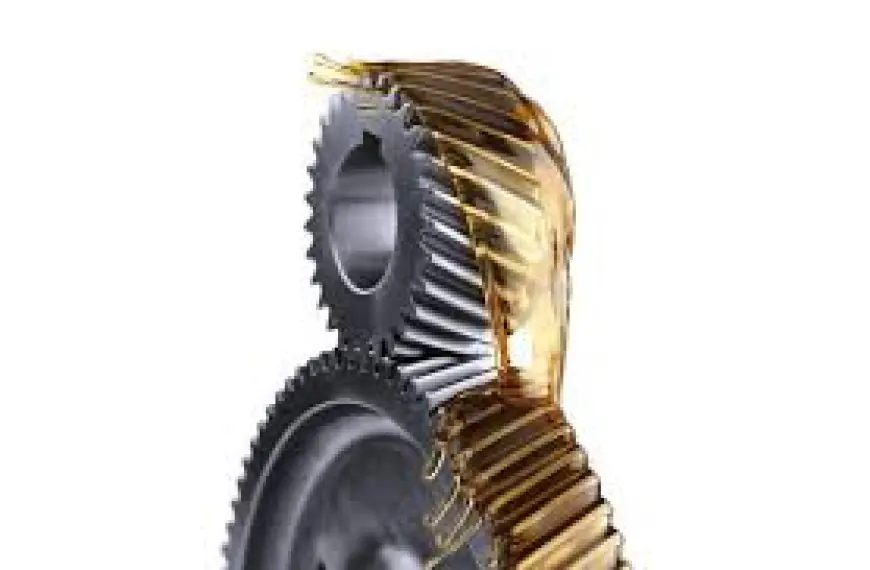Wind Turbine Gear Oil Market Forecast Highlighting Synthetic, Mineral, and Eco-Friendly Lubricants for Turbines
Wind turbine gear oil market forecast explores trends in synthetic, mineral, and eco-friendly lubricants shaping modern turbine performance worldwide.

The global wind turbine gear oil market is poised for robust growth as the renewable energy sector accelerates and turbine technology advances. With increasing investments in wind power infrastructure across onshore and offshore sites, the need for high-quality lubricants has become more vital than ever. The market forecast highlights rising demand across three key lubricant categories: synthetic, mineral-based, and eco-friendly formulations. Each of these plays a critical role in enhancing turbine efficiency, minimizing maintenance, and supporting long-term operational reliability.
As turbines are subjected to extreme loads, environmental conditions, and long service intervals, gear oil selection directly impacts performance and cost-effectiveness. The global shift toward smarter, cleaner energy solutions is reshaping lubricant requirements, prompting innovation across all product types.
Rising Demand for Synthetic Lubricants
Synthetic gear oils are expected to dominate the wind turbine lubricant market in the coming years due to their superior performance under demanding operating conditions. These oils are engineered for high-load applications and offer excellent protection against wear, oxidation, foaming, and temperature fluctuations.
Key advantages of synthetic lubricants include:
-
Extended drain intervals, reducing the frequency and cost of oil changes
-
Outstanding thermal and oxidative stability, critical in high-temperature zones
-
Superior film strength, reducing metal-to-metal contact and friction
-
Improved energy efficiency, boosting turbine output over time
Synthetic oils are particularly favored in offshore and high-capacity onshore turbines, where accessibility is limited, and operational reliability is paramount. As turbine sizes increase and maintenance windows shrink, the forecast indicates a surge in demand for fully synthetic formulations optimized for long-term gearbox protection.
Continued Use and Evolution of Mineral-Based Gear Oils
Despite the rise of synthetics, mineral-based gear oils continue to serve an essential role in the market, especially for smaller or older turbine models. These conventional lubricants offer a cost-effective solution for operations in moderate climates and standard load conditions.
Benefits of mineral-based gear oils include:
-
Affordability, making them ideal for budget-conscious wind operators
-
Sufficient performance for standard applications
-
Ease of formulation and blending with additive packages
Market forecasts suggest that while mineral oil demand will decline in advanced markets like Europe and North America, it will continue to hold significant share in developing regions, particularly in Asia-Pacific, Africa, and parts of Latin America. In these areas, many turbines still operate under conditions that do not necessitate the higher cost of synthetics.
However, even mineral oils are evolving with the inclusion of advanced additive technologies. These include anti-wear agents, oxidation inhibitors, and extreme pressure additives that extend oil life and enhance gearbox protection, bridging the performance gap between mineral and synthetic oils.
Eco-Friendly Lubricants Gaining Ground
Environmental sustainability is a top priority in the renewable energy industry, making eco-friendly lubricants a fast-growing segment of the wind turbine gear oil market. These lubricants, often referred to as Environmentally Acceptable Lubricants (EALs), are biodegradable, non-toxic, and designed to minimize ecological harm in case of leaks or disposal.
Key features of eco-friendly lubricants include:
-
Biodegradability—breaks down naturally in the environment
-
Low toxicity—safe for marine life and ecosystems
-
Compliance with global environmental regulations
Eco-friendly lubricants are especially important in offshore wind farms, where the risk of oil leakage into sensitive marine environments is a serious concern. Governments and regulatory agencies are increasingly mandating the use of EALs for offshore operations, driving market demand.
The forecast anticipates rapid adoption of these lubricants in Europe and North America, where environmental regulations are most stringent. In the coming years, Asia-Pacific is also expected to expand its use of eco-friendly gear oils as sustainability becomes a priority in that region's wind energy development.
Regional Outlook and Growth Opportunities
-
North America: Rising offshore projects and digital maintenance technologies are pushing demand for synthetic and EALs. Operators are investing in premium lubricants to support turbine uptime and sustainability goals.
-
Europe: Strong leadership in offshore wind is driving the need for marine-grade synthetics and eco-lubricants. Regulatory compliance plays a key role in shaping product preferences.
-
Asia-Pacific: Rapid turbine deployment in China, India, and Southeast Asia is sustaining high-volume demand for mineral-based oils and driving gradual shifts toward synthetic and eco-friendly options.
As wind power continues to expand globally, lubricant providers have a unique opportunity to tailor products to each region's specific operating environments and regulatory expectations.
Innovation and OEM Collaboration Fueling Market Expansion
Lubricant manufacturers are increasingly partnering with wind turbine OEMs to develop customized oils that align with new gearbox technologies and performance standards. This collaborative approach ensures compatibility, extends component life, and supports warranty compliance. Additionally, advancements in additive technology are allowing for hybrid formulations that combine the benefits of different base oils—offering performance, cost savings, and environmental benefits in one package.
Conclusion
The wind turbine gear oil market forecast points to strong, diversified growth across synthetic, mineral, and eco-friendly lubricants. As wind power scales globally, operators seek gear oils that meet increasingly complex demands—longer life, higher efficiency, reduced maintenance, and lower environmental impact.
What's Your Reaction?
 Like
0
Like
0
 Dislike
0
Dislike
0
 Love
0
Love
0
 Funny
0
Funny
0
 Angry
0
Angry
0
 Sad
0
Sad
0
 Wow
0
Wow
0
















































